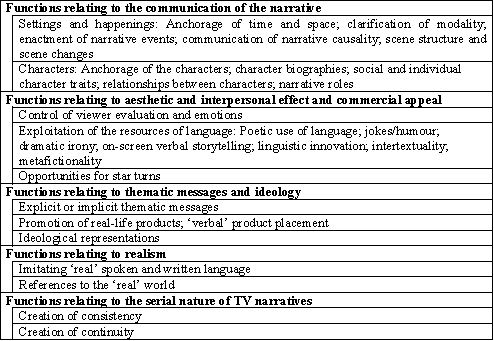In my book Language and Television Series: A Linguistic Approach to TV Dialogue (Cambridge University Press, 2018) I have included many examples of TV dialogue, but also had to delete several because of lack of space. I have collected some of the dialogue extracts (or videos) that didn’t make it into the book on this website. Most of these examples illustrate one or more aspects of the new functional approach to television series (FATS) that I discuss more extensively in my book, and are best read in connection with Chapters 3 and 4, except for those that deal with double-voicing.

Table 1 A new functional approach to television series (FATS)
Click on the links below to get to the examples:
Functions relating to the communication of the narrative
Clarification of modality
Enactment of narrative events
Communication of narrative causality
Functions relating to aesthetic and interpersonal effect and commercial appeal
Control of viewer evaluation and emotions
Exploitation of the resources of language
Functions relating to thematic messages and ideology
Explicit or implicit thematic messages
Functions relating to realism
References to the ‘real’ world
My book contains additional examples illustrating these and the other functions in Table 1.
Other examples
Double-voicing (crossing, stylization)
